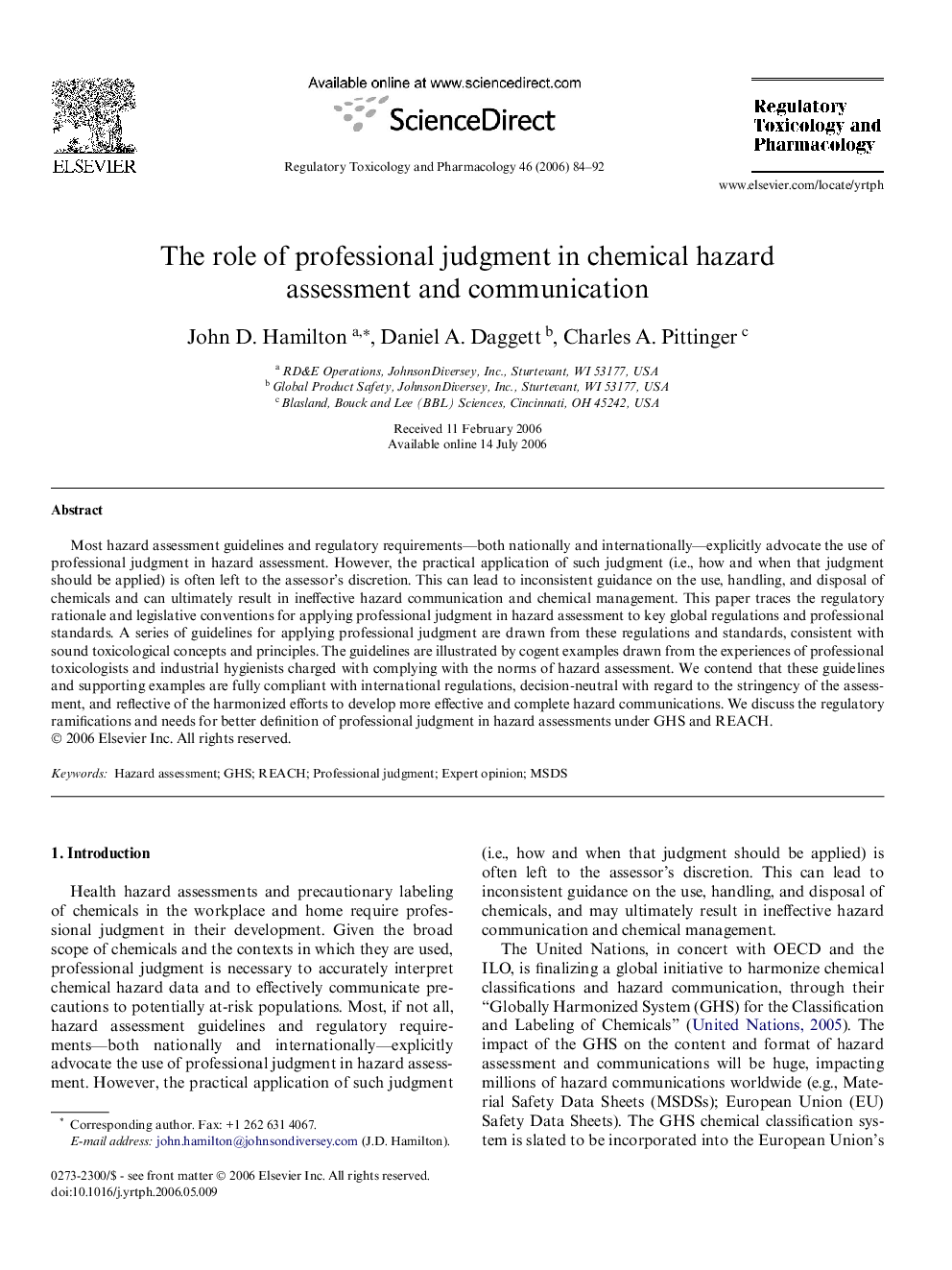| Article ID | Journal | Published Year | Pages | File Type |
|---|---|---|---|---|
| 2592972 | Regulatory Toxicology and Pharmacology | 2006 | 9 Pages |
Abstract
Most hazard assessment guidelines and regulatory requirements-both nationally and internationally-explicitly advocate the use of professional judgment in hazard assessment. However, the practical application of such judgment (i.e., how and when that judgment should be applied) is often left to the assessor's discretion. This can lead to inconsistent guidance on the use, handling, and disposal of chemicals and can ultimately result in ineffective hazard communication and chemical management. This paper traces the regulatory rationale and legislative conventions for applying professional judgment in hazard assessment to key global regulations and professional standards. A series of guidelines for applying professional judgment are drawn from these regulations and standards, consistent with sound toxicological concepts and principles. The guidelines are illustrated by cogent examples drawn from the experiences of professional toxicologists and industrial hygienists charged with complying with the norms of hazard assessment. We contend that these guidelines and supporting examples are fully compliant with international regulations, decision-neutral with regard to the stringency of the assessment, and reflective of the harmonized efforts to develop more effective and complete hazard communications. We discuss the regulatory ramifications and needs for better definition of professional judgment in hazard assessments under GHS and REACH.
Related Topics
Life Sciences
Environmental Science
Health, Toxicology and Mutagenesis
Authors
John D. Hamilton, Daniel A. Daggett, Charles A. Pittinger,
